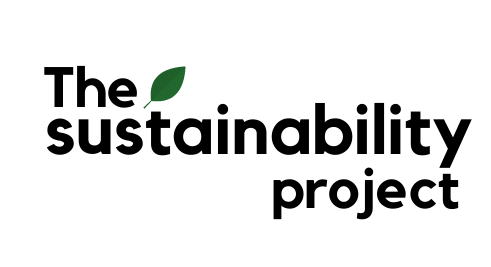Climate change has been described as a “pressing priority” for Singapore. Our tropical climate and low-lying land areas make us vulnerable to warmer temperatures and rising sea levels. Extreme weather changes are already being felt here, such as unusually cool temperatures and wet weather at the beginning of 2021. Our local sea level has also risen about 14 cm from pre-1970 levels!
If you are wondering, how can you as an individual help to combat climate change, here is one suggestion – through conversations! Yes, talking about climate change, which to us is honestly easier said than done. Did you know? Interpersonal communication is still to date one of the most effective ways to share information about climate change.
Therefore, talk! Talk with your friends. Talk with your family. Talk with your colleagues. Because if you do not talk about it, how would they know what is happening?
We know a climate conversation is a huge topic to tackle. When you start the conversation, people may brush you off or walk away. Don’t worry! That is pretty normal, which is why we are dedicating this post to share how to hold effective climate conversations. At the same time, giving a boost to your confidence!
How To Start A Climate Conversation
As a proverb says, “A journey of a thousand miles begins with a single step”.
Here are some small steps to create a powerful impact:
 Know Yourself And The Audience
Know Yourself And The Audience
More Singaporeans are aware of the perils of climate change these days. However, Climate Conversations noted that more than 80% are unlikely to talk about it. Why?
A study in Singapore proposed that those who paid more attention to climate change information are more likely to assume others have also seen them. People may thus think there is no need to talk about climate change since it is “common knowledge”. Yet, there are about 35% of Singaporeans who do not engage with climate change information! Hence, it is better not to assume.
Media exposure can cause anxiety and tension in everyone. It is easy to see negative comments on how people handle climate change issues on these platforms. This fear of criticisms may deter us from starting to talk. Of course, there are climate change deniers. Thankfully, Singaporeans have a high trust in official sources regarding the environment. We are less likely to see them here. Else, we can talk to those who are concerned about climate change – about 50% of the population. These people are more willing listen and take action.
Starting with one area you are enthusiastic about makes for a surmountable barrier. If you are passionate about climate justice, you can start by talking about climate refugees. If you love shopping and make-up, you can talk about sustainable swaps or being more mindful about your lifestyle. If you love the outdoors, you can invite your audience to go for a beach cleanup and tell them why.
Use Active Listening And Have Empathy
We can run into people with dismissive, opposing views, or people who are simply indifferent. Before starting a blame game, it is crucial to understand why they are behaving that way. This means to use active listening to pinpoint ways of getting through to them. At the same time, we practice empathy and patience to connect with them better.
Sometimes, people reject ideas based on who the idea originate from, which is called “wrong-person bias”. To avoid being the “wrong person”, we have to commit to being honest and communicate without exaggeration.
Much climate change information can overly focus on dire messaging which induces guilt in the audience. Climate preaching, which proposes that consumers should voluntarily and individually protect the climate, has the same effect. Some people may then feel implicitly accused.
In order to stop feeling bad, they can reject the “accusation”. Then, they reflect the unpleasant feeling back to the messenger, accusing them of engaging in conspiracy or greed.
No one wants to believe their daily actions contributes to death around the globe. Empathy is understanding that avoidance of guilt and preservation of self-esteem can fuel denial and apathy. It is helpful to thus frame our conversation without introducing fear, guilt and accusation.
Appealing On An Emotional Level
While facts are important, engaging on an emotional level is even more powerful. This is because humans have a deep desire to fit in and bond with others. Thus, sharing personal stories, experiences and reflections can be more impactful than presenting facts.
For people who are generally more apathetic to standing in the middle ground, sharing about environmental issues faced by local communities can be helpful. People can undervalue climate change because the effects do not feel like a “local problem”. However, they might be more invested if they know why Singapore seems to be experiencing more warmer weather recently.
For people experiencing cognitive dissonance – the mental discomfort that results from holding conflicting beliefs at once – over climate change, it will be helpful to focus on hope.
Assure them that climate change is not due to “continued human wrongdoing”. Remind them that there are people and organizations succeeding in the fight against climate change. The lobbying of many Singaporeans to save Chek Jawa Wetlands from reclamation remains one of such success story. Our collective action can indeed even influence the government’s policy.
Creating A Constructive Action Plan
Heaping well-meaning advice on our audience for “stopping climate change” may seem like the easiest way to create a climate conversation.
However, our audience can be overwhelmed. For example, installing solar panels may not be achievable by an individual in Singapore, unless they have adequate funds or help. We need to apply empathy from the previous points to allow our conversation to be constructive.
You can brainstorm for achievable and meaningful ideas together with your audience. Tackling travel and home energy usage are great ways to start. These are, after all, where our significant carbon footprint lies.
In a Channel News Asia’s Talking Point episode, a family was able to cut down about 230 litres of water usage per person per day just by making changes to their taps and usage habits. Simple habit changes can also be applied to when we travel. Wherever we are staying, we can minimize our energy consumption by turning off electronics when not in use. Eating local and reducing food waste are other ways of reducing our carbon footprint overseas.
Finally, remind your audience that tackling climate change is a collective effort. While personal action is important, they are not alone. Otherwise, despair can immediately stop people from doing anything at all.
Being Comfortable With Being Imperfect
When we start to consider ourselves an environmentalist, there may be a pressure to be “perfect”. Such perfectionism stems from how society defines what a “good environmentalist” should be like. “Don’t know enough” has been one of the reasons stopping people from talking about climate change.
When tackling climate conversations, we also may feel the need to convince people, or the conversation will be “fruitless”. This need to be perfect, sadly, stops us from addressing the real issue.
Every human being has their own set of beliefs. It is hard to motivate or change people’s mindset every time. By doing our best and also knowing when to leave things as it is, is part of the journey.
We need to acknowledge that we cannot be perfect advocates. However, we can always grow in our journey. The best thing to do at that moment is to take accountability for our actions, especially our words, as we start our conversation.
Commit to never stop learning about climate change. Commit to being open to change. Commit to doing the right thing with your best effort. Being at peace with ourselves makes starting a climate conversation easier.
Conversations are tricky things to navigate. A climate conversation, where we can fall to preaching easily, requires more flair.
Although we can strive towards inspiring action in addressing climate change, we need to exercise balance. Making people feel pressured or judged tend to create more denial or inaction. Plant the seed in their minds and let them decide how to nurture it.
Hopefully, tips in this article can allay any fear in starting a climate conversation. In any case, our site is a trove of ideas on topics to tackle!


